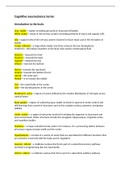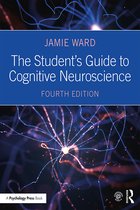Summary
Summary of all terms and definitions from The Student's Guide to Cognitive Neuroscience by Jamie Ward, Third Edition
- Course
- Institution
- Book
This document contains all terms and definitions from chapters 2, 3, 4, 7, 8, 9, 10, 14, 15, and 16. You can use it to make flashcards or to study for you exams. It could even be handy for just having on your computer while getting through the book so you can seek out the definitions of terms very ...
[Show more]




